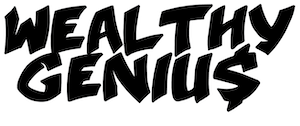How much is R.A. Dickey worth?
| Net Worth: | $30 Million |
|---|---|
| Profession: | Professional Baseball Pitcher |
| Date of Birth: | October 29, 1974 |
| Country: | United States of America |
| Height: | 1.88 m |
About R.A. Dickey
Robert Allen Dickey, a former professional baseball pitcher from the United States, was born on October 29, 1974. For the Texas Rangers, Seattle Mariners, Minnesota Twins, New York Mets, Toronto Blue Jays, and Atlanta Braves in Major League Baseball (MLB).
- Born: Oct. 29, 1974
- Hometown: Nashville, Tenn.
- Height: 6-2
- Weight: 215 pounds
- Bats: Right
- Throws: Right
- Family: Wife, Anne; four children (two daughters, two sons)
- Primary position: Starting pitcher
ahead of the bigs
Dickey said in his book, “Wherever I Wind Up: My Quest for Truth, Authenticity and the Perfect Knuckleball,” that a babysitter started abusing him sexually when he was 8 years old.
was a quarterback and pitcher for Montgomery Bell Academy in Nashville during his high school years. was 15-3 with 218 strikeouts as a senior, and his team won the state championship.
selected by the Detroit Tigers in the tenth round of the draft, but he decided to take a scholarship to play baseball at the University of Tennessee, where he played alongside Todd Helton.
won 15 straight games while a freshman at Tennessee, earning first-team All-American honors. Finished 9-4 with three saves as a junior after going 14-4 as a sophomore to assist the Vols in reaching the College World Series. was an English literature major and an Academic All-American.
the 18th overall pick in the first round of the 1996 draft by the Texas Rangers. At the 1996 Summer Olympics, he pitched for the American national team, winning both of his starts for a team that took home the bronze medal.
In the minors
The Rangers reduced their bonus offer after learning that he had a problem with his elbow (he was born without an ulnar collateral ligament), and he signed for $75,000 less than his market value.
went 1-4 with a 6.94 ERA in his debut season at Single-A Charlotte before switching to the bullpen as a closer and saving 38 games in his second. He made slow progress through the Rangers’ minor-league system.
went 6-7 in 1999 in Double-A Tulsa, dividing his time between the rotation and bullpen, before moving on to Triple-A Oklahoma for six appearances.
He was briefly called up in 2001 after an 8-9 campaign in Triple-A the previous year and went 0-1 in four relief appearances with the Rangers. Nevertheless, he spent the majority of the season in Triple-A, with an 11-7 record and a 3.75 ERA. Go 8-7 with a 4.09 ERA in 2002 while spending the entire season with Oklahoma City.
Profession Highlights:
In 2003, after joining the Rangers’ bullpen, the pitcher posted a 5.09 ERA in 116 2/3 innings and a 9-8 record.
began 2004 with a 4-1 record, but finished 6-7 with a 5.61 ERA, returning to the bullpen.
He went 10-6 for Oklahoma before being sent back to the minors in 2005, and he spent the majority of 2006 there as well. He appeared to have hit his ceiling with a forkball that was thrown with a knuckleball-like grip, a below-average fastball, and a curveball. In Triple-A, he began pitching knuckleballs full-time in 2005.
After being released by the Rangers, he threw in Triple-A for the Brewers, winning 14 games while Ryan Braun’s partner in Nashville in 2007. was selected by the Seattle Mariners in the Rule 5 draft after signing with the Minnesota Twins.
When he returned to the majors with Seattle in 2008 as a knuckleballer, he went 5-8 with a 5.21 ERA, not much better than he had been during his time with the Rangers. threw four wild pitches in one inning on August 17, 2008, tying the major league record.
He was a reliever with the Twins and was not re-signed by Seattle. In 2009, he alternated between Triple-A and the the leagues.
At age 35, he signed a minor league contract with the New York Mets, and his knuckleball finally found some success. began the 2010 season in Triple-A Buffalo, where he made eight starts and went 4-2 with a 2.23 ERA. called up, went 11-9 with a 2.84 ERA, and won a career-high 11 games. In the NL, the ERA was seventh best.
on August 13, 2010, against the Philadelphia Phillies, threw a complete game one-hitter.
Before the 2011 campaign began, he and the Mets came to an agreement on a $7.5 million two-year deal with a $5 million 2013 option.
Was 8-13 with a 3.28 ERA in 32 games as a Mets starter in 2011.
In 2012, everything came together. tossed back-to-back one-hitters in June 2012, the first time in the National League since 1944, and once threw 32 2/3 straight scoreless innings. His first All-Star team selection.
Finished 20-6 with a 2.73 ERA and a league-best 230 strikeouts in 233 2/3 innings to become the Mets’ first 20-game winner since Frank Viola in 1990.
became the third pitcher from the Mets to win the NL Cy Young award and the first knuckleball pitcher to do it.
In December 2012, was part of a deal that sent Josh Thole to the Toronto Blue Jays in exchange for three prospects and catcher John Buck. signed a $25 million, two-year deal with the Blue Jays.
Off the field
After the 2011 climbing season, I ascended Mount Kilimanjaro to bring attention to the problem of human trafficking in India.
He co-wrote his 2012 autobiography with New York Daily News reporter Wayne Coffey.



